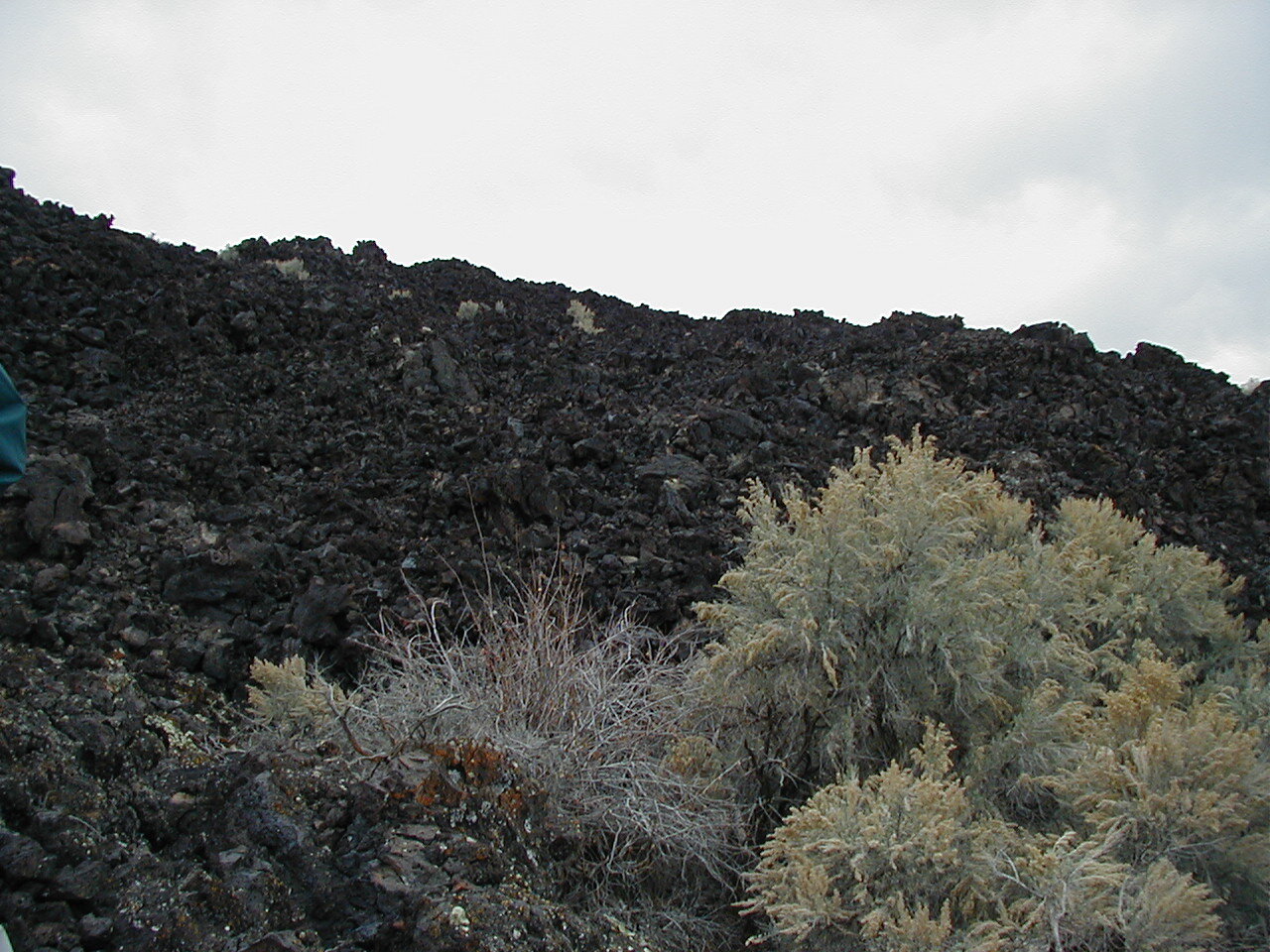
Volcanic basalt rocks in the Black Rock Desert, Utah. Credit: Paul Gabrielsen
If you drive south through Utah on Interstate 15 and look somewhere around Fillmore West, you will see slippery hills and black rock fields. The area is, aptly named, the Black Rock Desert. It may not look like much, but you’re looking at some volcanoes in Utah.
A number of earthquake series, in September 2018 and April 2019, drew scientists’ attention to the Black Rock Desert. The series, which includes the major earthquakes and their aftershocks, was very different from the Magna earthquake that shook the Wasatchfront in 2020 and other earthquakes in Utah. The Black Rock series were captured by the Utah Regional Seismic Network and the nearby temporary deployment of seismic equipment that watched a geothermal well. Earthquakes in the Black Rock Desert are rare and the recording of the seismic surveys of these earthquakes provides a glimpse into the volcanic system of the Black Rock Desert which, although there are no signs of eruption, is still active. A study of the earthquake series is published in Geophysical research letters.
“The results showed us that we need to pay more attention to the Black Rock environment,” says Maria Mesimeri, a postdoctoral research fellow at the University of Utah Seismograph Stations. “We need to improve seismic and volcanic monitoring in this area so that we are aware of small changes that may occur.”
Not your typical earthquakes
The earthquake series, with 4.0 and 4.1 magnitude shocks, were picked up by both the Utah Regional Seismic Network and a dense temporary network of seismometers used as part of Utah FORGE, an experimental geothermal project conducted by the U.S. Department of Energy and Industry through the University of Utah, about 20 miles south of the Black Rock Desert near Milford, Utah. The temporary network has allowed researchers to detect more aftershocks than usual. The regional network, for example, detected 19 earthquakes as part of the series in April 2019. But the dense temporary network detected another 35 earthquakes. Each additional aftershock provided a little more information for seismologists studying the sequence.

Location of the Black Rock Desert in Utah. Orange triangles indicate the location of the University of Utah seismograph stations. Black dots show the locations of earthquakes in Utah. Credit: Maria Mesimeri / University of Utah Seismograph Stations
The Black Rock series have shown interesting features that set them apart from the 2020 Magna series and other earthquake series in Utah. While the initial Magna earthquake occurred at a depth of about six kilometers below the surface, a typical depth for earthquakes in Utah, the earthquakes of Black Rock were much shallower – about 1.5 kilometers below the surface.
‘Because these earthquakes were so shallow,’ says Mesimeri, ‘we were able to measure the deformation of the surface [due to the quakes] using satellites, which are very unusual for earthquakes of this small nature. “
Mesimeri and her colleagues also found that the earthquakes produced seismic energy at a lower frequency than is commonly seen in Utah earthquakes. And one of the main types of seismic waves, shear waves or S-waves has not been detected in the Black Rock series.
Volcanoes? In Utah?
All of these signs point to the Black Rock series that have a very different origin than the Magna series, which was generated by the movement of the Wasatch Fault. The Black Rock earthquakes, on the other hand, can be caused by ongoing activities in the Black Rock volcanic field.

Volcanic rocks found in the Black Rock Desert, Utah. Credit: Paul Gabrielsen
What do Volcanoes in Central Utah Do? The Wasatch Mountains (and Wasatch Fault) form the eastern edge of a region called the Basin and Range province that extends west to the Sierra Nevada. The province is stretched apart by plate tectonics, and the stretch thins the crust so that more heat can rise from the interior of the earth. In the Black Rock area, the heat caused eruptions of basalt lava to about 9,000 to 12,000 years ago.
What then do these earthquake series mean for the volcanoes of the Black Rock Desert?
“Our findings suggest that the system is still active and that the earthquakes were probably the result of fluid-related motion in the general environment,” Mesimeri said, referring to potential magma or heated water. “The earthquakes can be the result of the fluid pushing through rock or the result of deformation due to fluid motion emphasizing the surface defects.”
Activity in a volcanic field does not mean eruption, and Mesimeri says there is no evidence that any eruption in the Black Rock Desert is imminent. But, she says, this is an area that geoscientists might want to monitor closely.
The Fukushima earthquake could be an echo of the 2011 disaster – and a warning for the future
Maria Mesimeri et al., Unusual seismic signals in the Sevier Desert, Utah, possibly related to the Black Rock volcanic field, Geophysical research letters (2021). DOI: 10.1029 / 2020GL090949
Provided by the University of Utah
Quotation: Unusual earthquakes highlight central Utah volcanoes (2021, March 2), accessed March 4, 2021 from https://phys.org/news/2021-03-unusual-earthquakes-highlight-central-utah.html
This document is subject to copyright. Except for any fair trade for the purpose of private study or research, no portion may be reproduced without the written permission. The content is provided for informational purposes only.
